Featured Photo: Two basic-plumaged adult male Ruddy Ducks take flight from somewhat choppy afternoon waters on Diamond Lake.
Diamond lake is a beautiful 3,000-acre lake at about 5,000 ft elevation in the Cascades of eastern Douglas County, Oregon. After a pause of several years, I again offered a fall birding and nature tour of Diamond Lake by boat. This year, 2022, for the first time, I offered two trips, one in mid-September, and one in late October. This post is regarding the September trip, which took place September 17, 2022, 08:00-14:00.
The idea for the mid-September trip was exploratory, to see what was on the lake this time of year, as all previous trips had been in late October to early November. A couple unusual migrants were possible: a jaeger of some species and Sabine’s Gull, both of which are rare but regular inland this time of year. Neither of these showed up, but I’m getting ahead of myself. Various personal circumstances came up for all six people that had signed up for the trip and I had to make a decision. I decided to do the trip anyway. I wanted to see what was on the lake in mid-September and I was grateful that my wife Lisa decided to go with me. Some friends later met up with us at the South Shore and rode back to the lodge with us in the afternoon, so it turned out to be a fun day. The overall number of waterbirds was low compared to late October, but as you will see, the lake held plenty of gems to find among the sparkling waters….
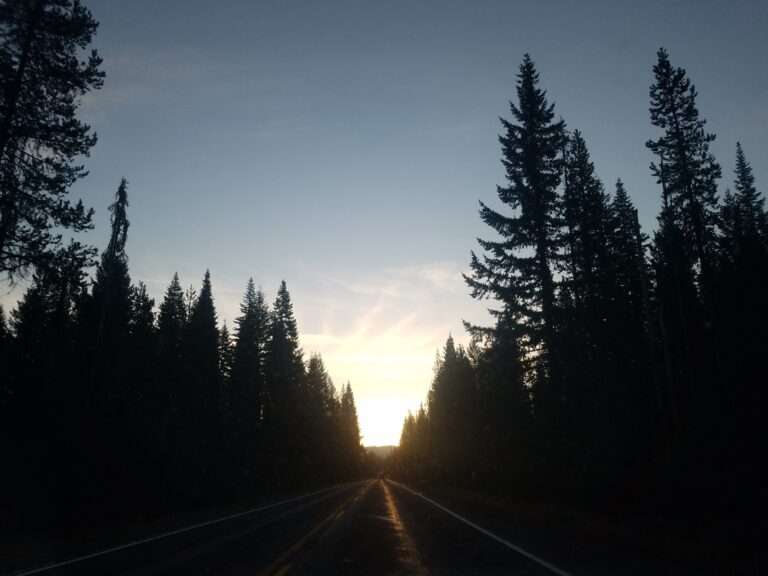
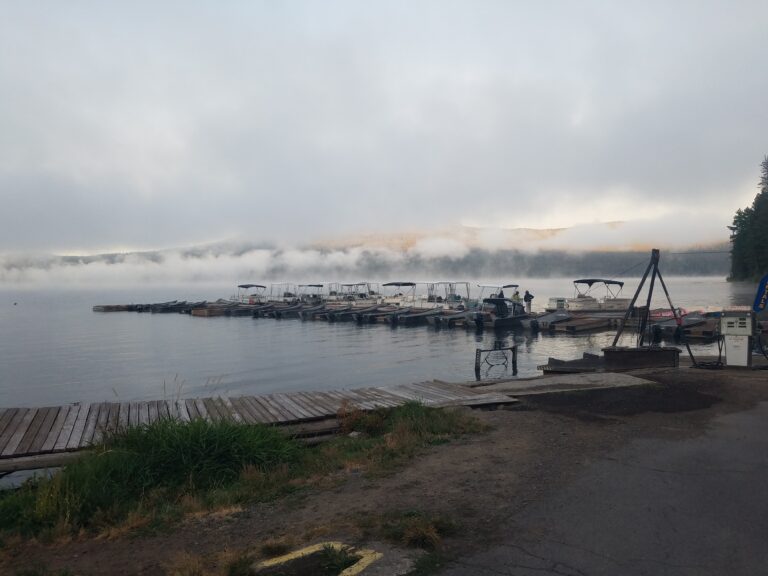
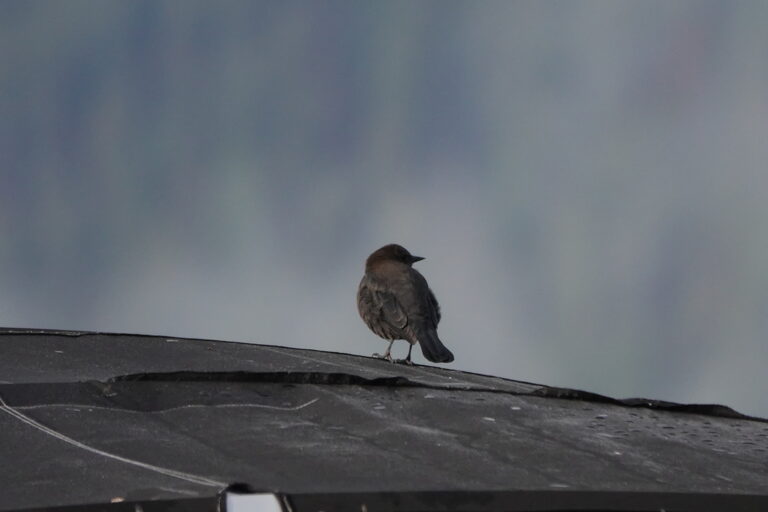

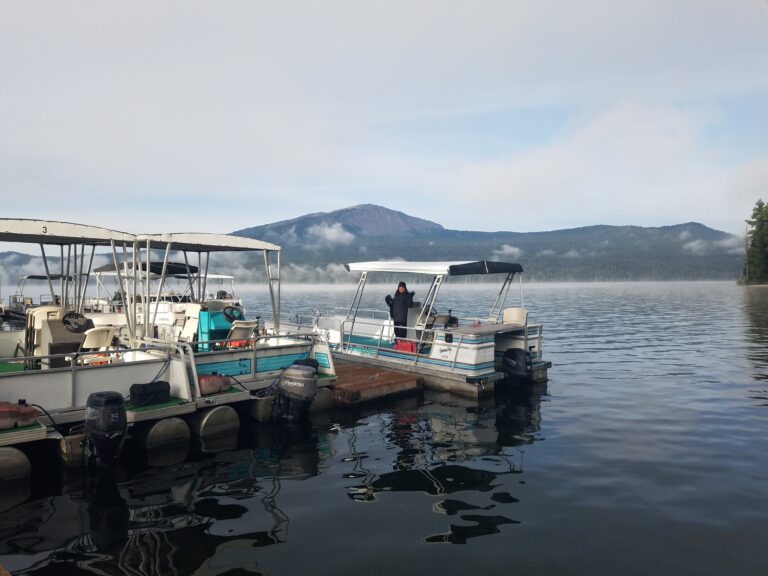
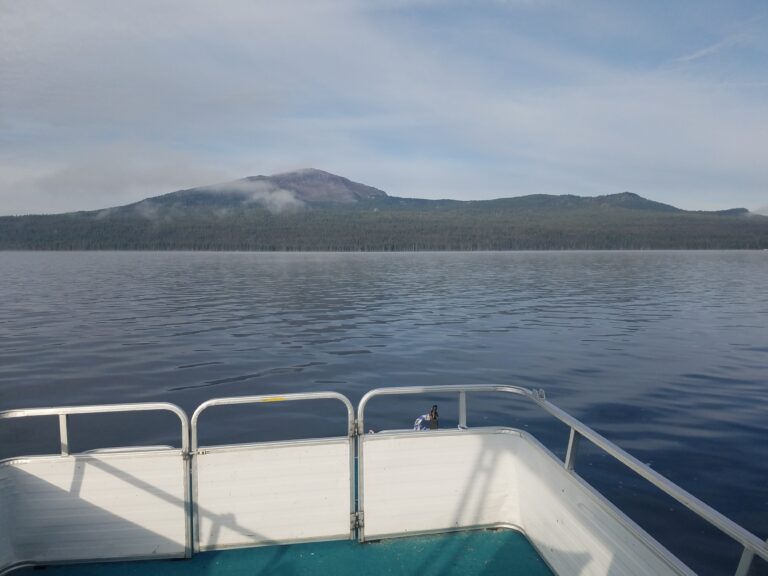
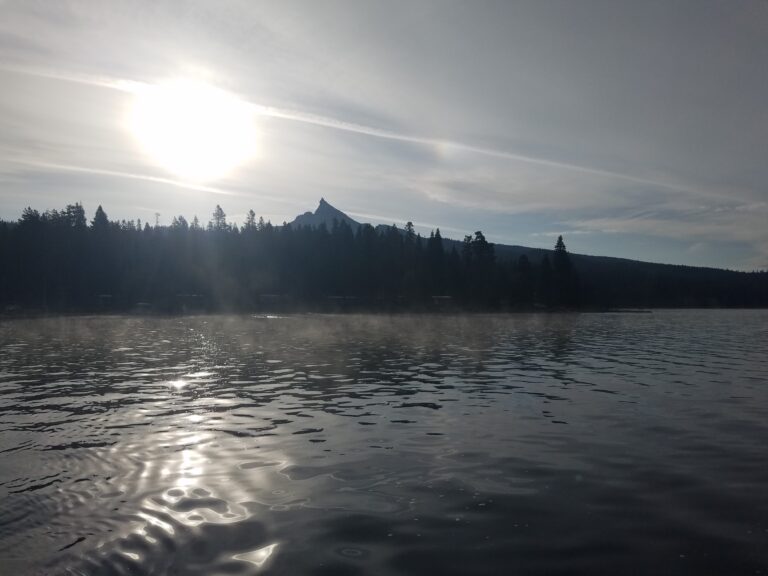
When Lisa and I arrived at the marina at 07:15, air temperature was about 32F and there was some fog on the lake, obscuring visibility. We decided to get a warm breakfast at the lodge and at about 08:00 we were back at the marina and boarded our Diamond Lake patio boat. By that time the lake was mostly clear of fog and the sun began warming our cheeks and hearts. The patio boats have a flat, fairly stable and elevated platform to stand on, with railing all around to keep passengers on the boat.
The general plan for the day was to work our way counterclockwise around the lake. However, as we left the marina, I could see almost nothing to the west, our intended direction, but several groups of birds, including some gulls, were present to the south, so we went that direction before resuming the general plan. The image below shows the full route, as mapped in my eBird.org app. The lake is approximately 1 mile wide (E-W) and 3 miles long (N-S).
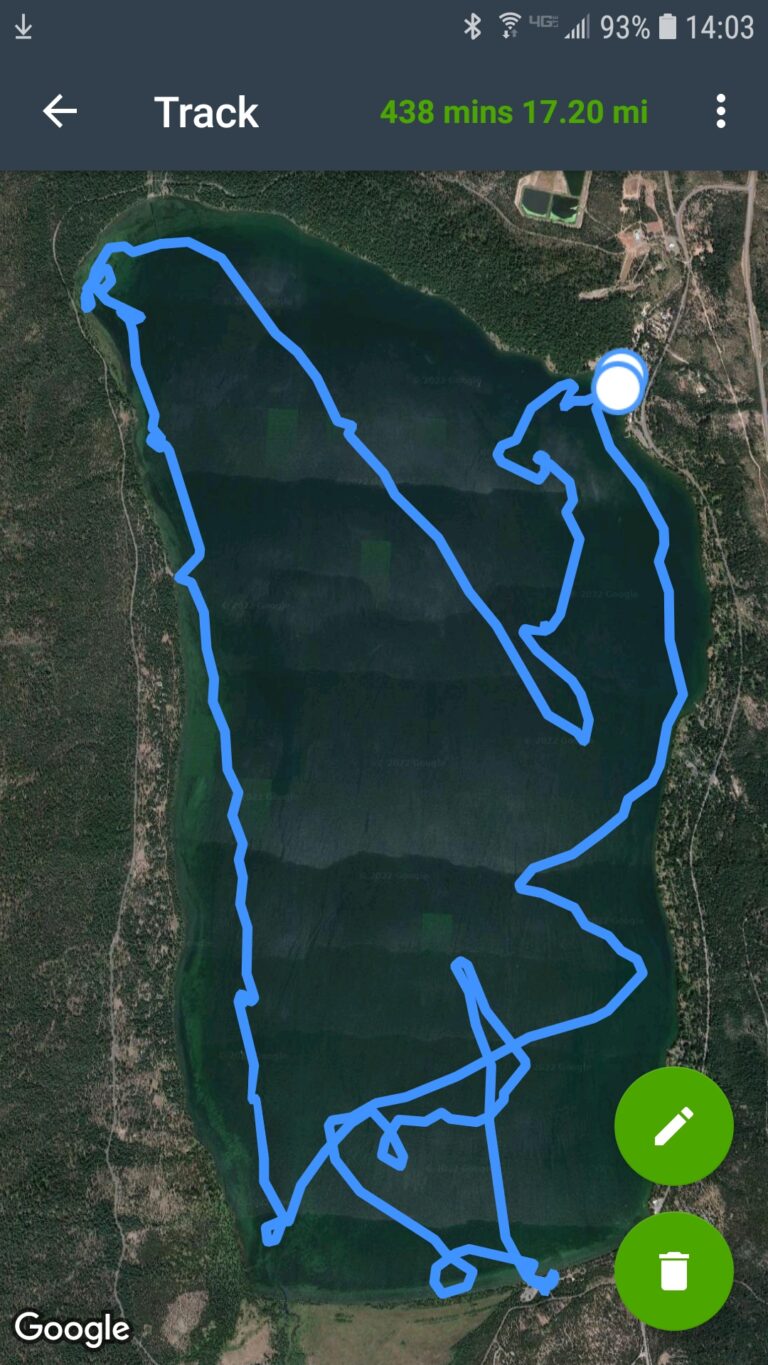
As we got closer to the flocks I spotted south of the marina, I could make out that they were some expected groups of Eared Grebes, which gather in large numbers on the lake every late summer and fall. Being a mix of both adults and young of the year and in various degrees of molt, they presented a variety of interesting plumages. The gulls were a group of 17 California Gulls of various ages, but no other gull species was with them. However, in their vicinity, picking food from the water surface as all the gulls and grebes were doing, was a group of juvenile, but expert surface-picking Red-necked Phalaropes.

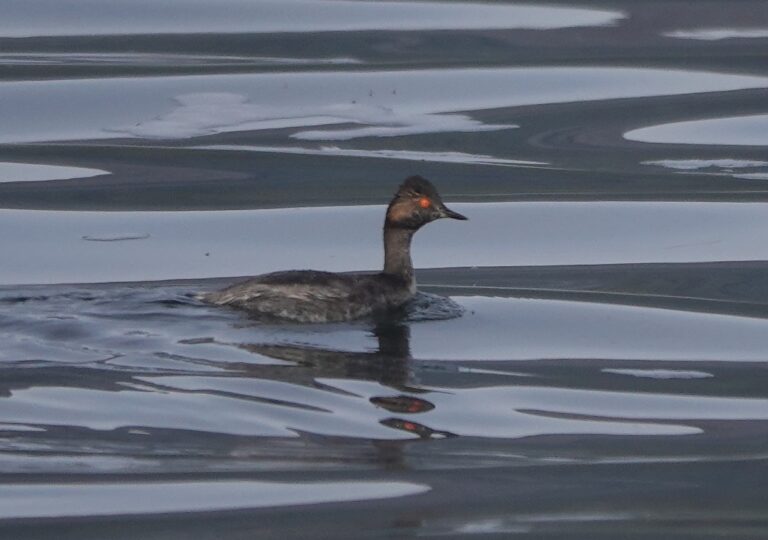

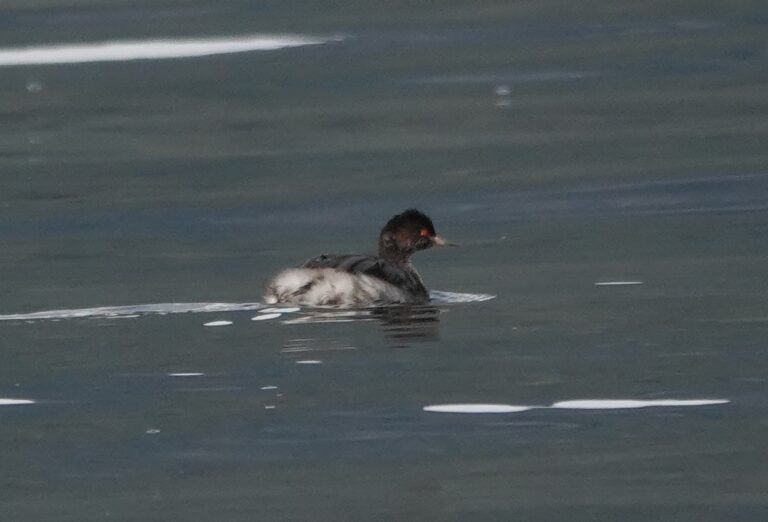
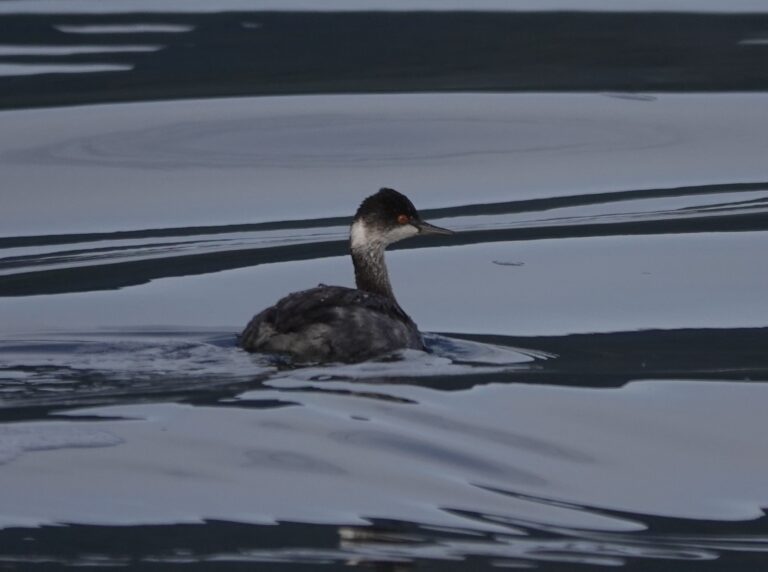
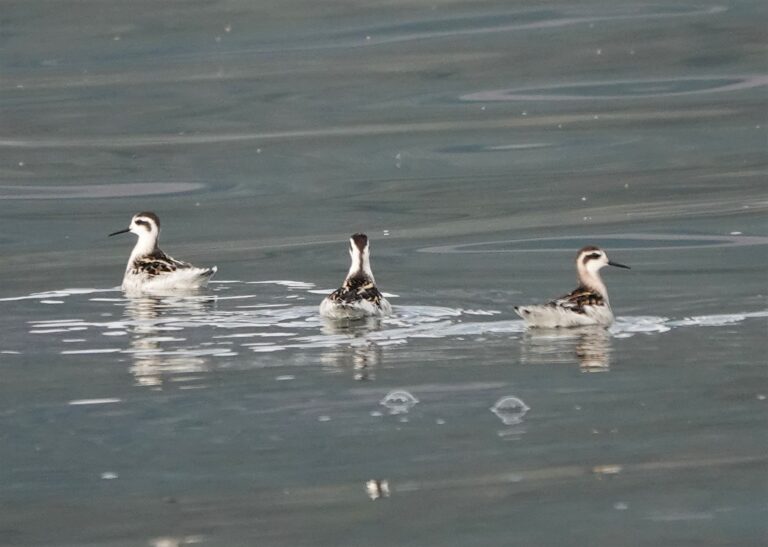
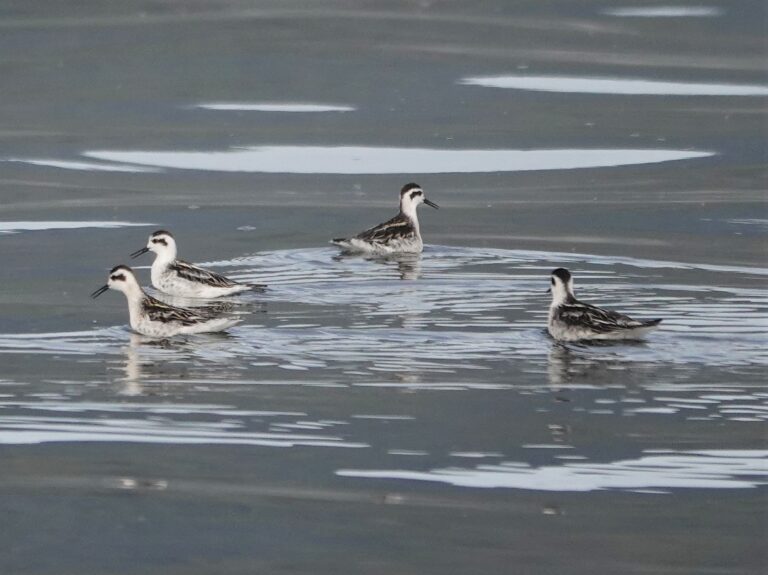
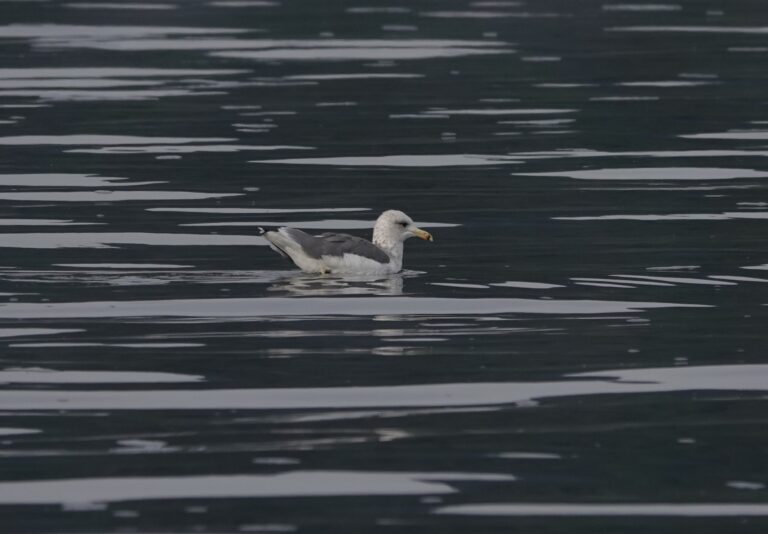
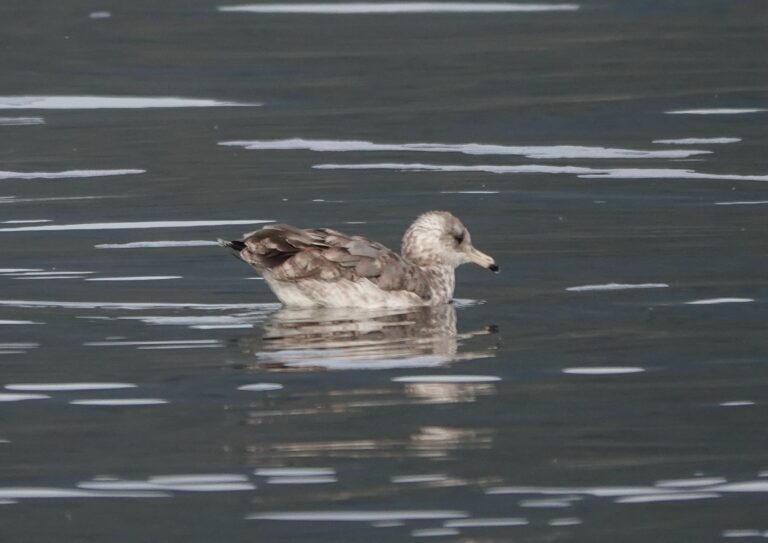
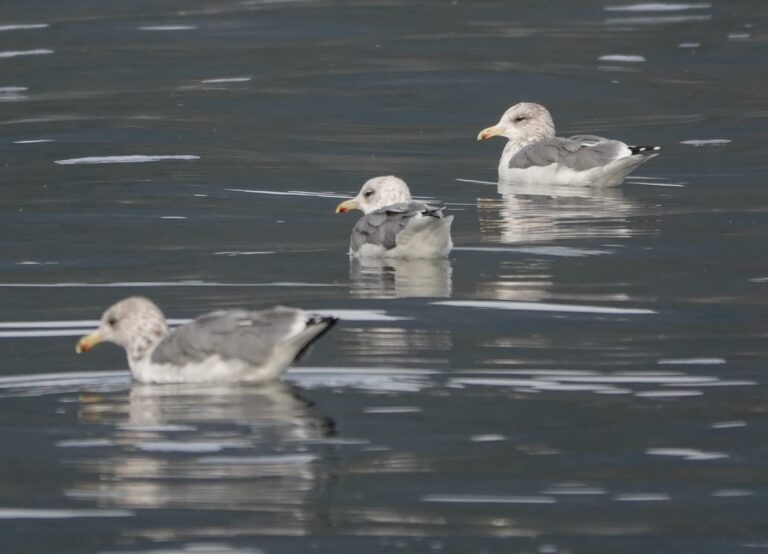
We resumed our counter clockwise approach by heading back toward the northwest corner of the lake where the outlet, Lake Creek, takes water down to Lemolo Lake. Here and there within a few hundred yards of shore were Common Mergansers, some foraging out on open water and some resting on logs near the bank. I found it odd to see a couple of these Common Mergansers holding their tails up; something I don’t often see them do. Also here we encountered our first large tight band of rather dull-plumaged Barrow’s Goldeneye. My presumption is that these were mostly young-of-the-year, but I am still researching how best to age these birds.

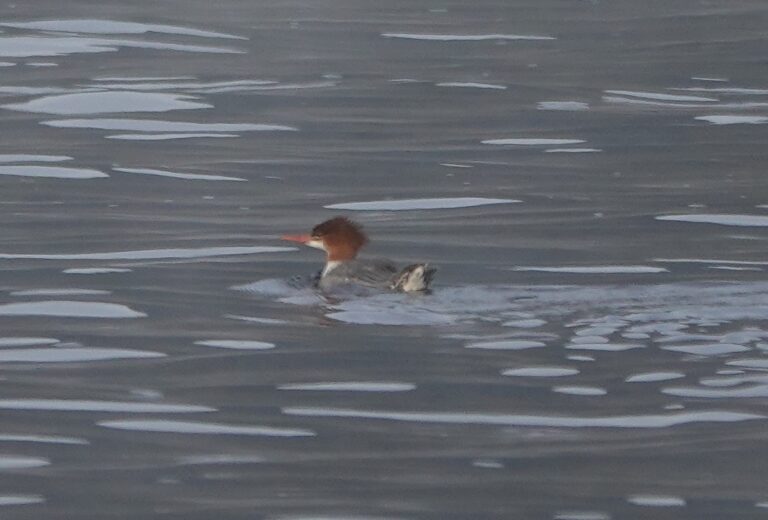
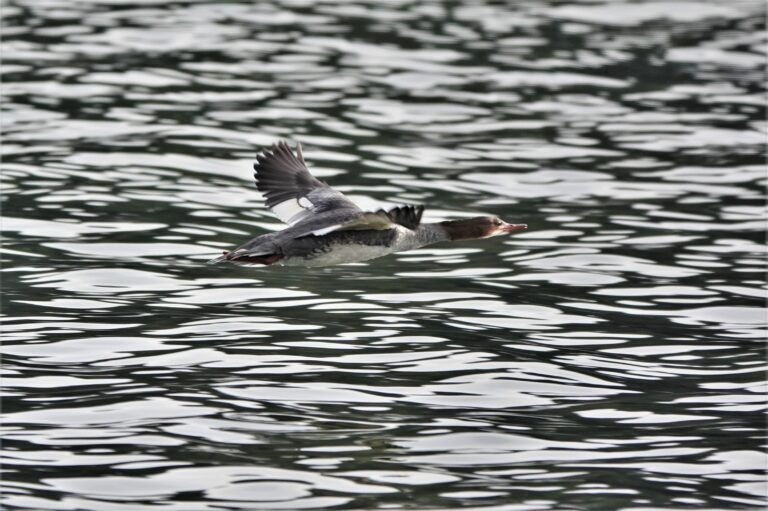

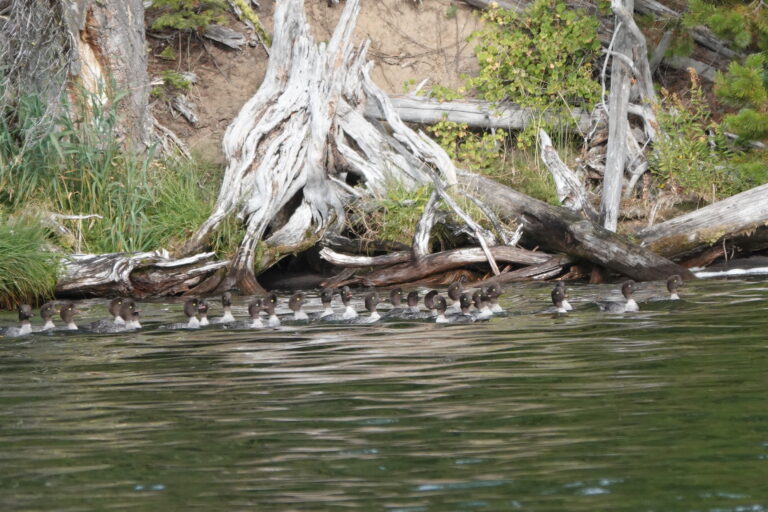
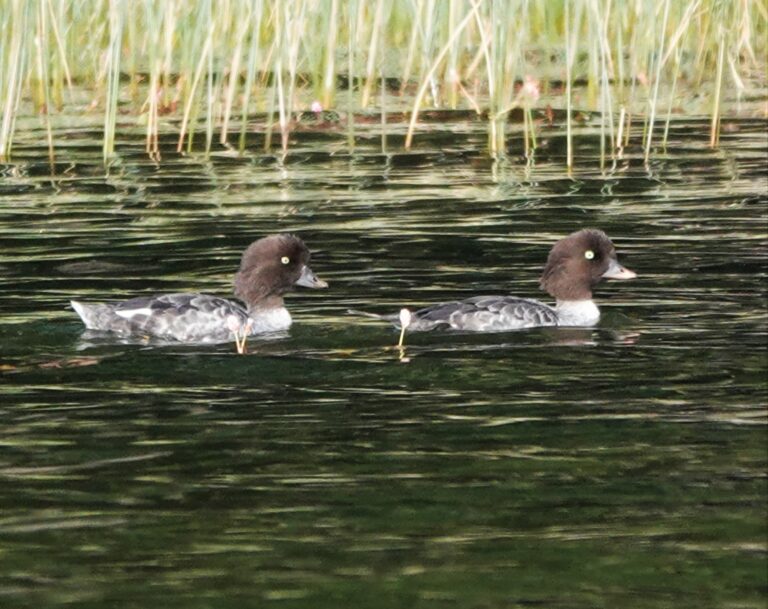

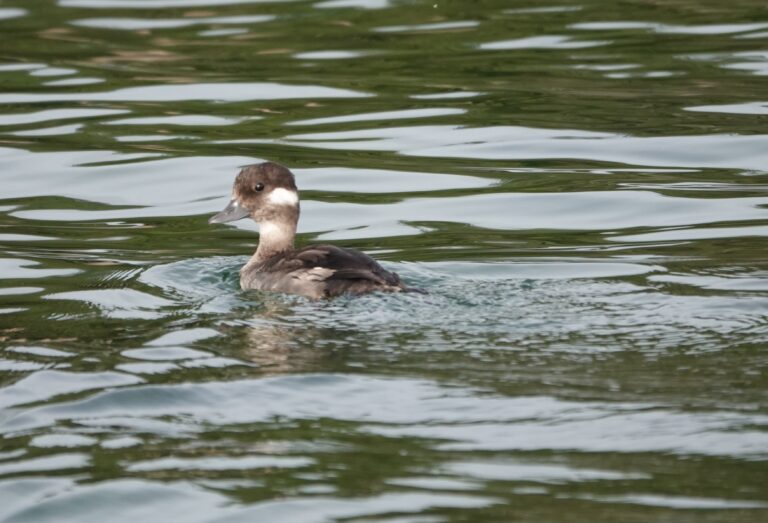
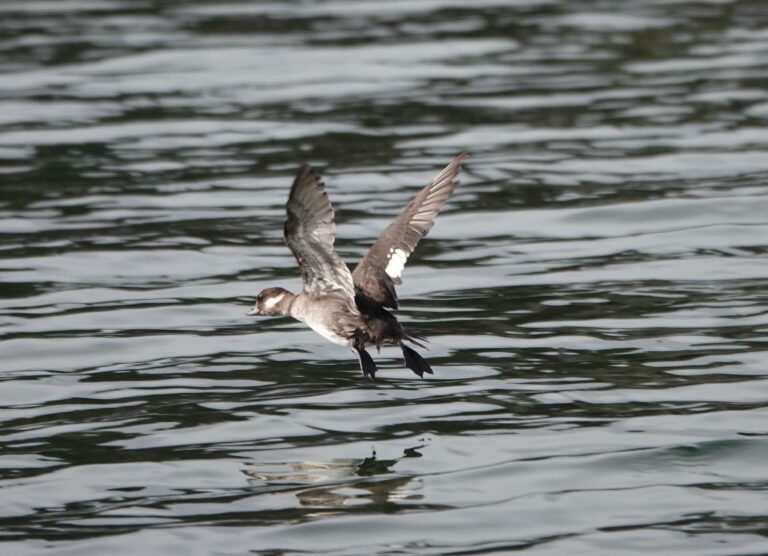
At this point we noticed a group of American Robins (presumed migrant birds) coming down to a floating log near shore to drink from the lake just south of where we were, so we motored over to look around. Soon we noticed other birds as well, such as many Yellow-rumped Warblers, some Evening Grosbeaks, Red-winged Blackbird, a Cedar Waxwing, a Red-breasted Sapsucker, a Townsend’s Solitaire, and a Marsh Wren.

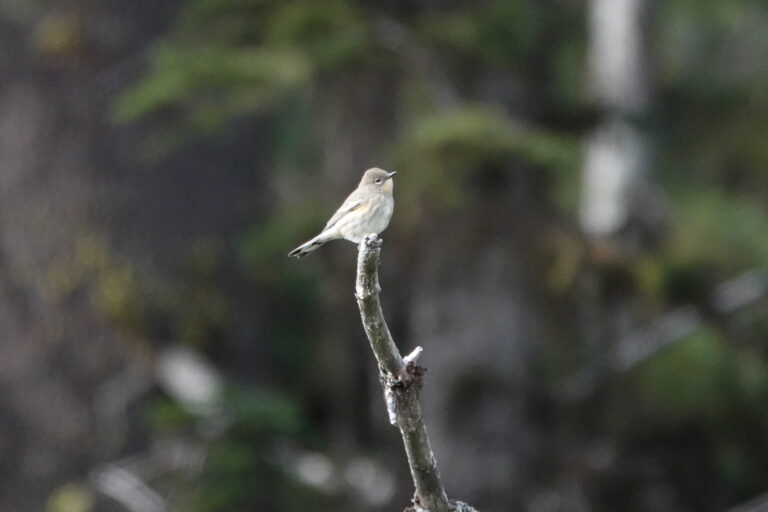
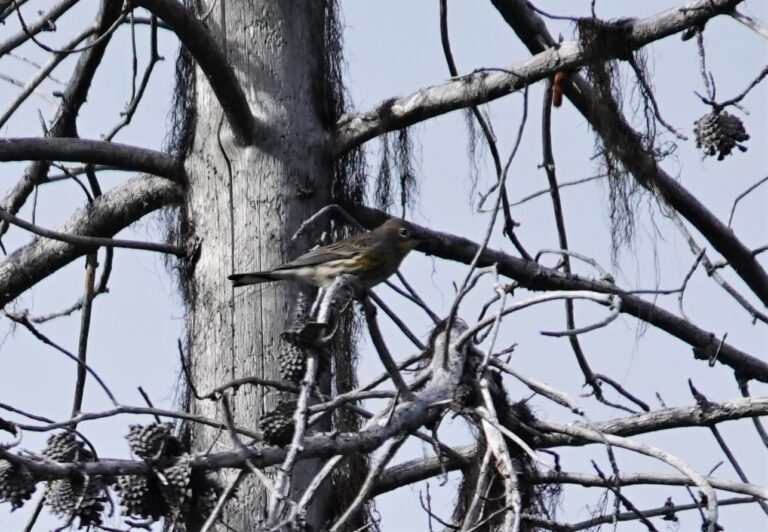
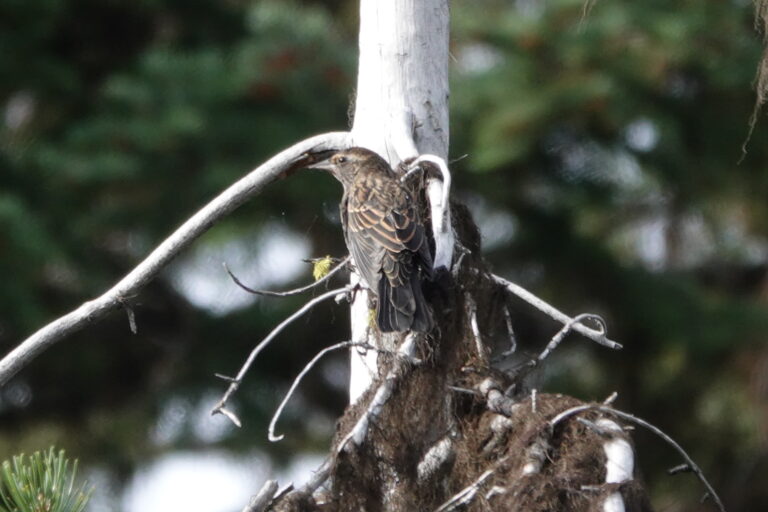
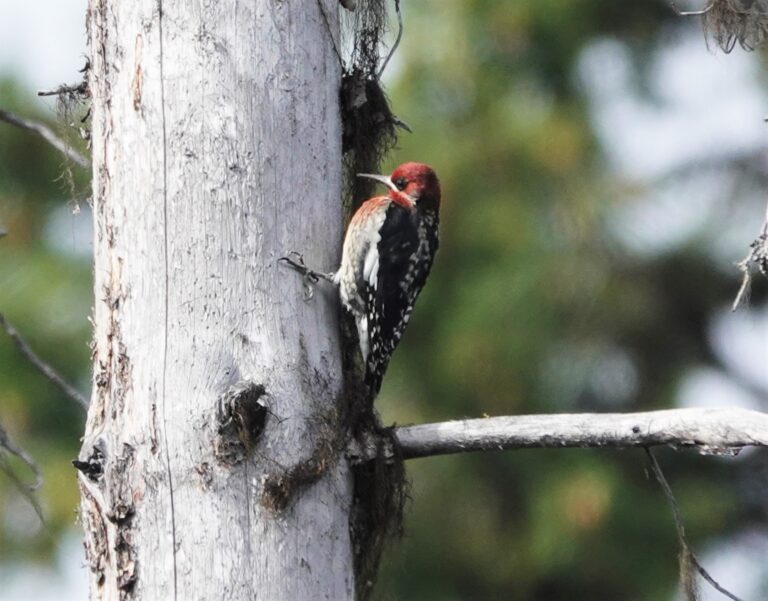
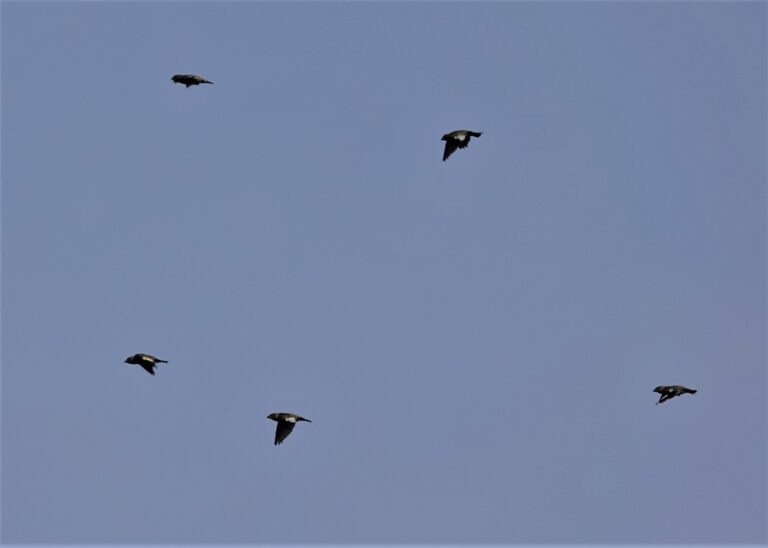
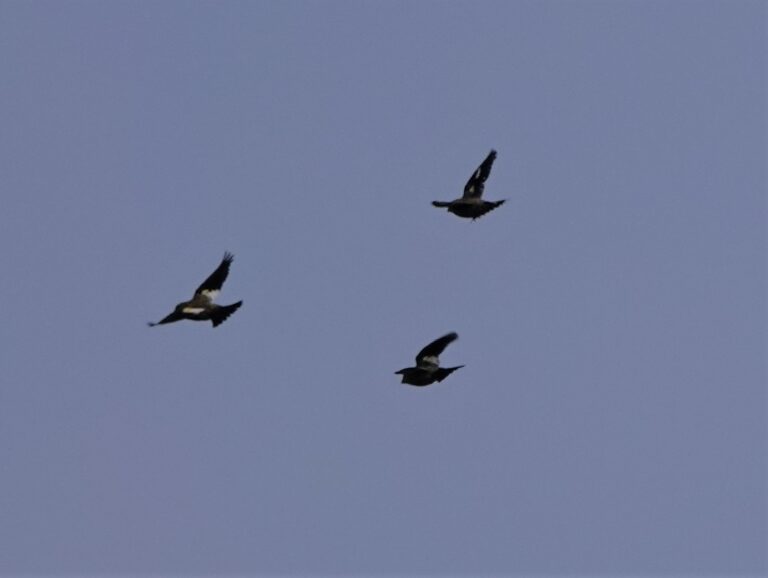
A short distance to the south along the shore were a few more Barrow’s Goldeneye, a female Redhead swimming and diving with them, a juvenile Pied-billed Grebe, and a group of Canada Geese.
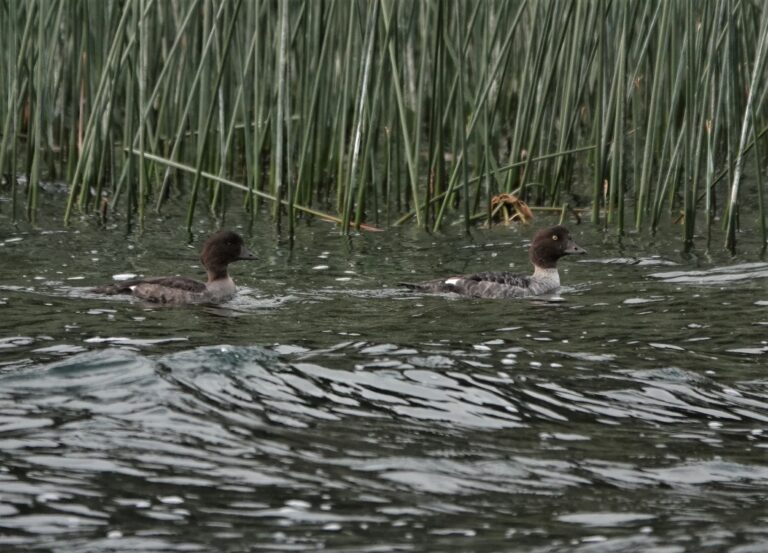

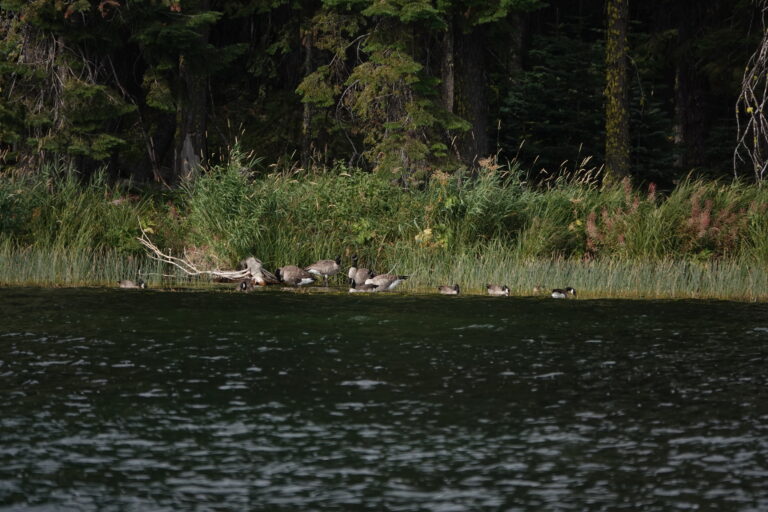

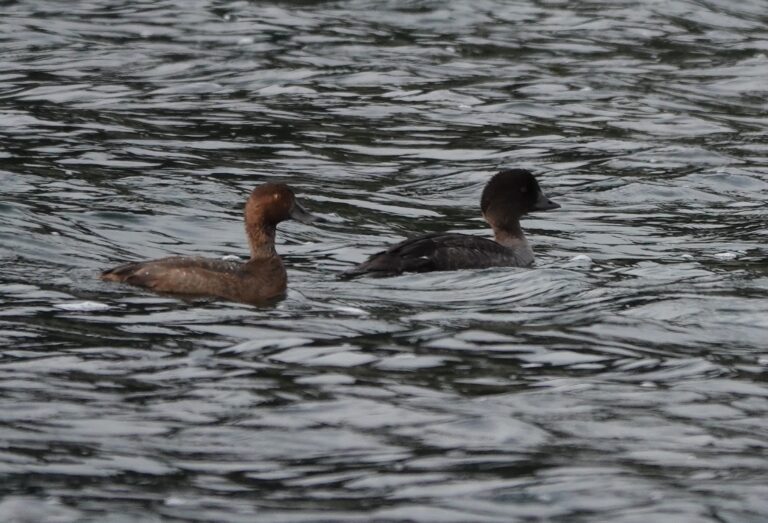
As we continued south along the west shore of the lake, drifting a bit farther from shore as we traveled south, Eared Grebes continued in small numbers scattered everywhere and small numbers of Barrow’s Goldeneye dotted the lake edge. A few additional species made their appearance, including an immature Osprey, a group of four adult Bald Eagles, and a female Mallard who I called the “pelagic duck.” This female mallard would come wheeling in like a shearwater from behind the boat and land near port or starboard with that characteristic whoooosh sound of a landing waterbird. It appeared she wanted something to eat. Then we would leave her behind (she couldn’t paddle fast enough to keep up); and a few minutes later she would circle in and “whooooosh.”
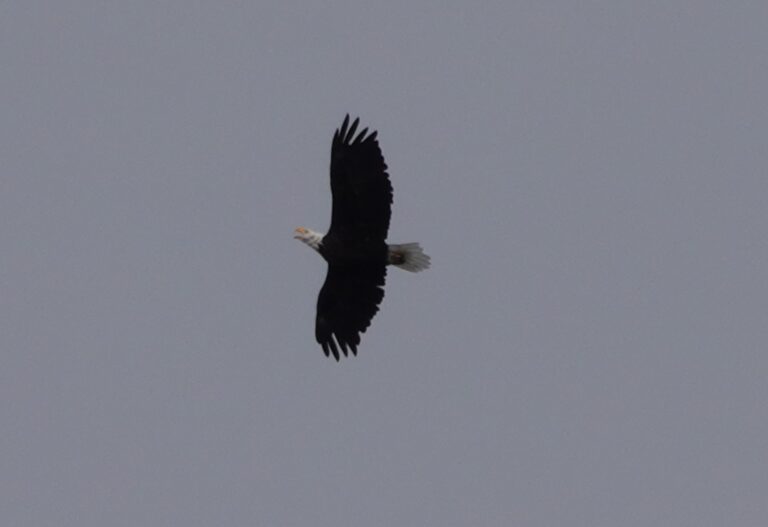


As we approached the shallow south end of the lake we could see the huge rafts of American Coots that feed at the lake in late summer through ice-up in late fall or winter. There were two groups totaling at least 2000 birds. As is typical, there were a few other species–though small in number–mixed in or generally in the same vicinity as the coots, including Western Grebes, American Wigeon, Ruddy Ducks, Northern Shoveler, Green-winged Teal, and one female Northern Pintail.
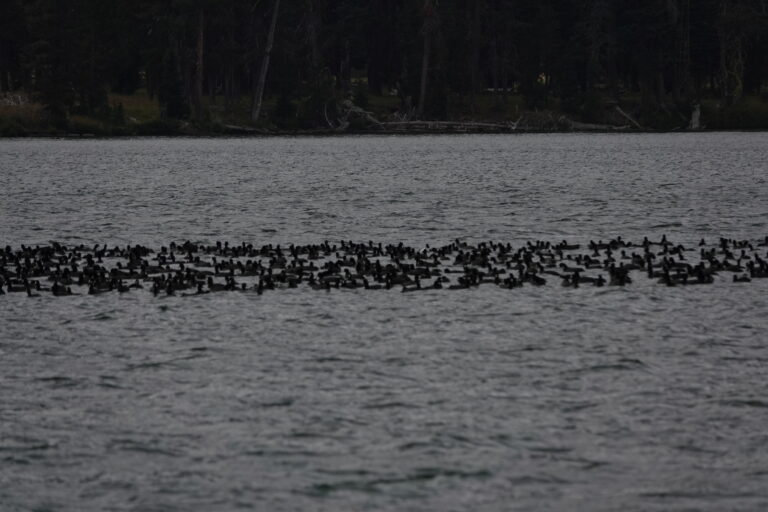
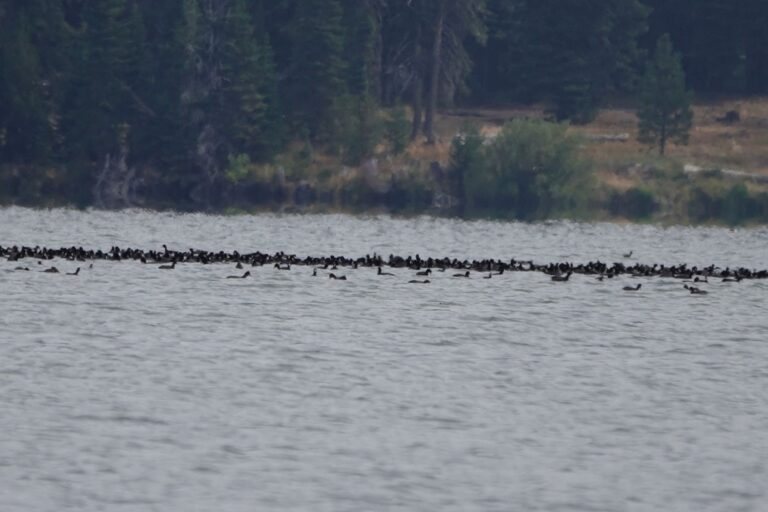
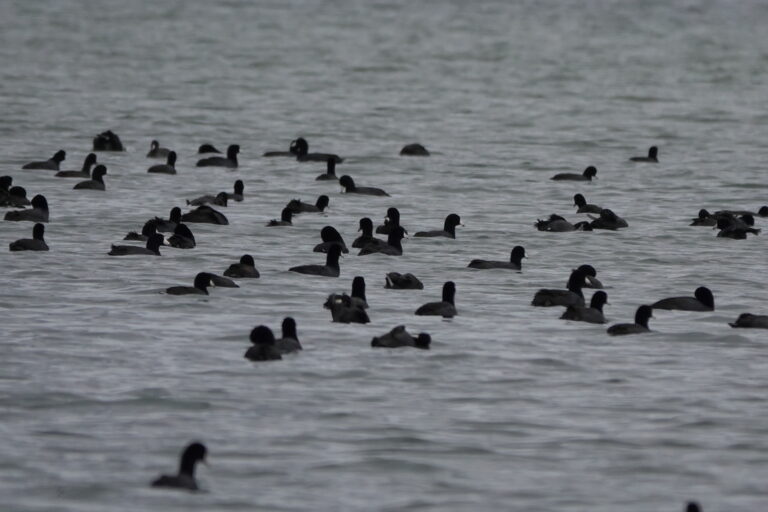

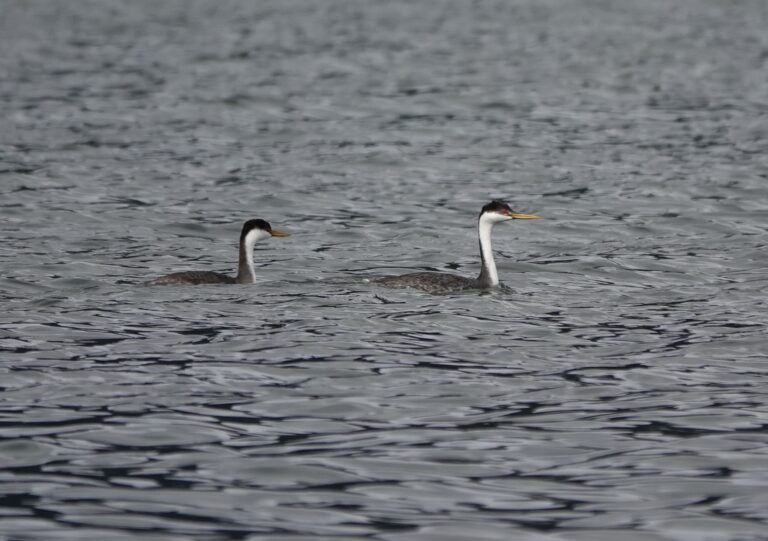
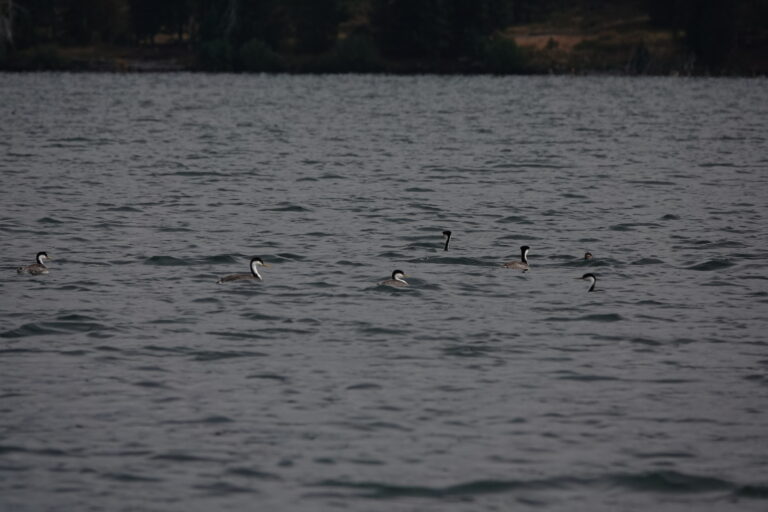


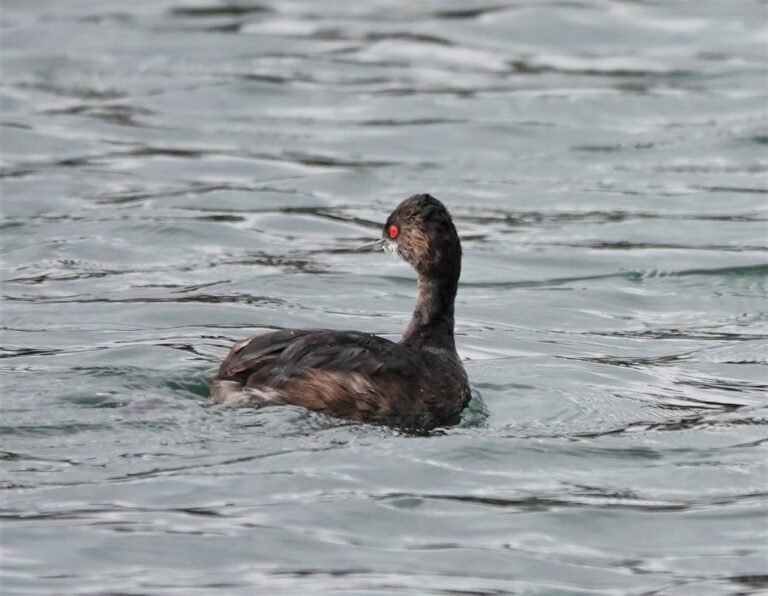
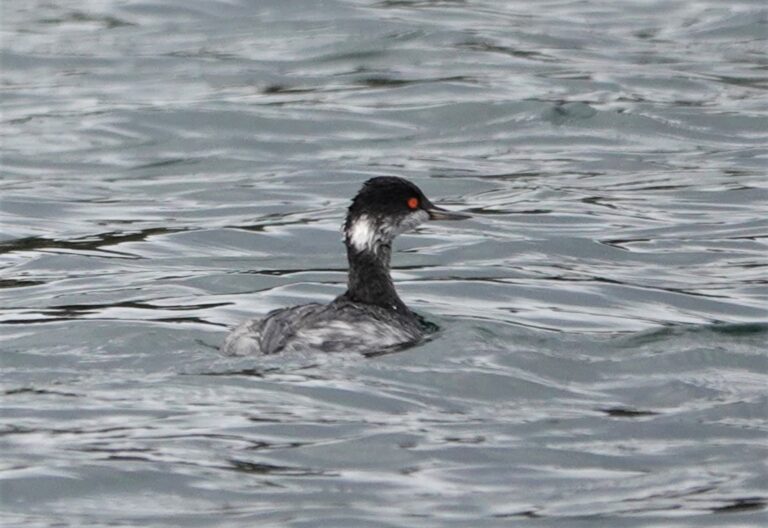
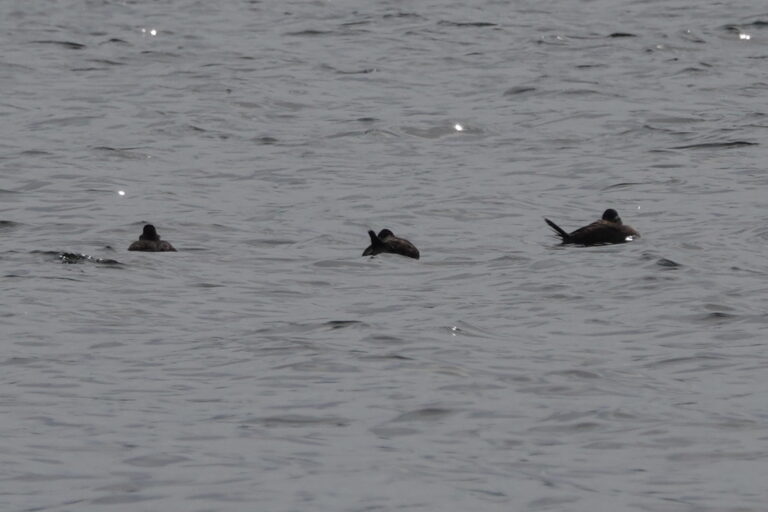
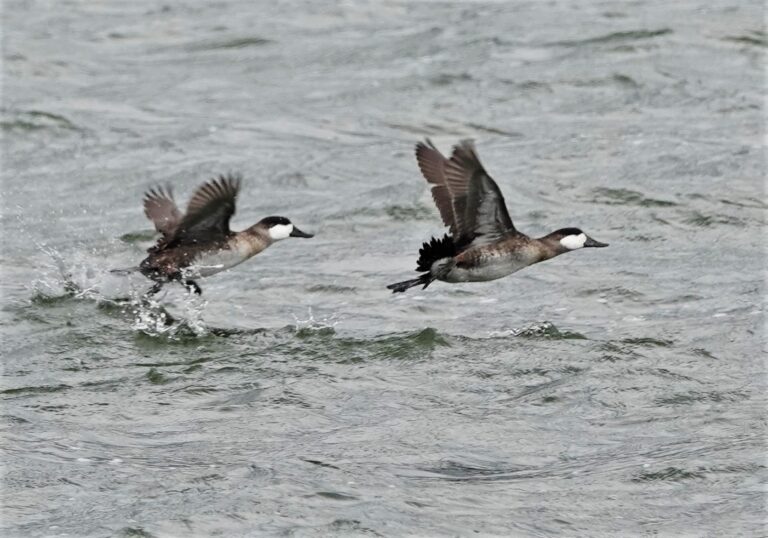

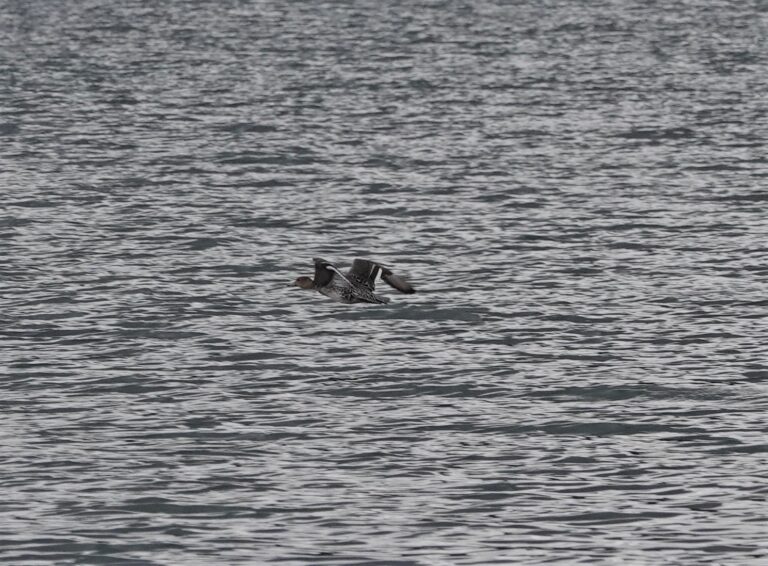
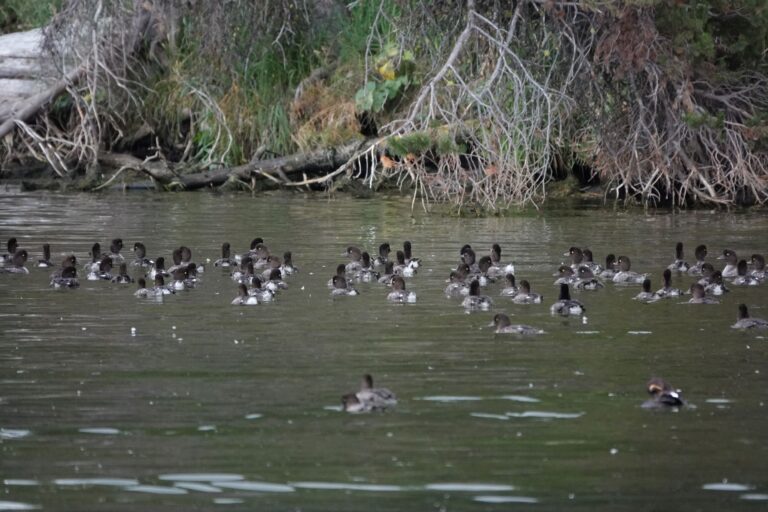
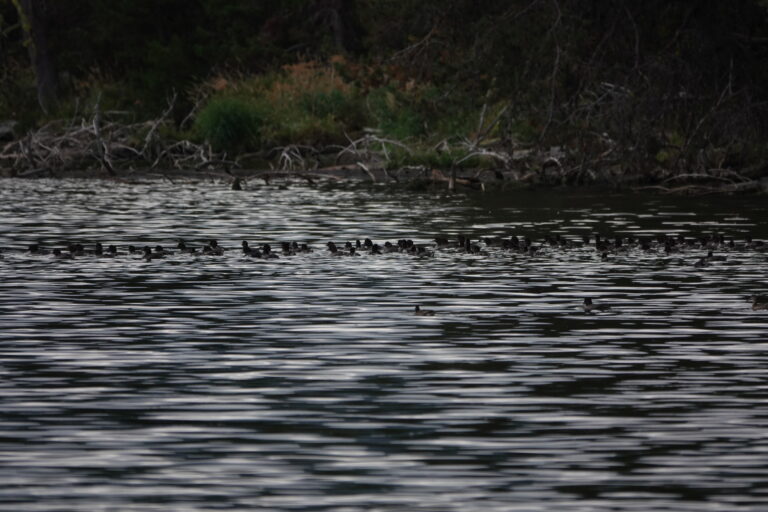

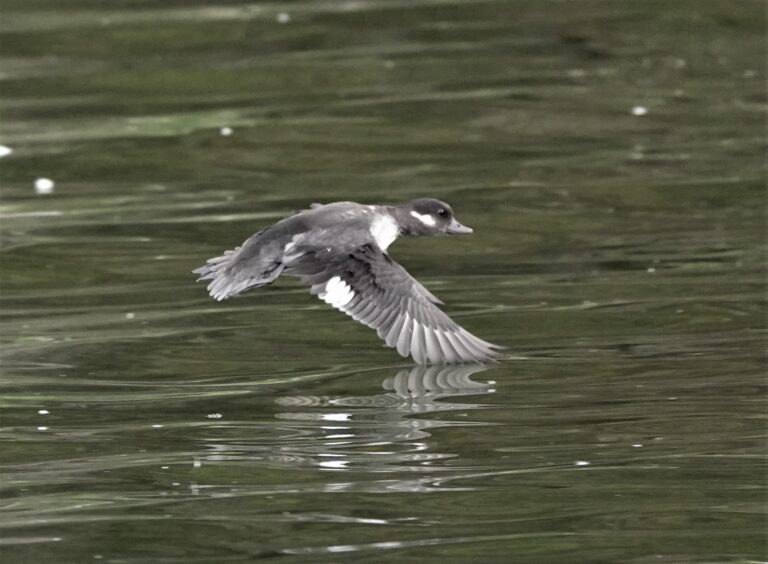

While at the south shore, we took a potty stop and looked around a bit. A group of songbirds was making quite a ruckous, which led us to an immature Sharp-shinned Hawk in the woods. A Savannah Sparrow made a brief appearance in the pines along the shore. A pair of sandpipers, one Western and one Least, foraged together along the rack line.

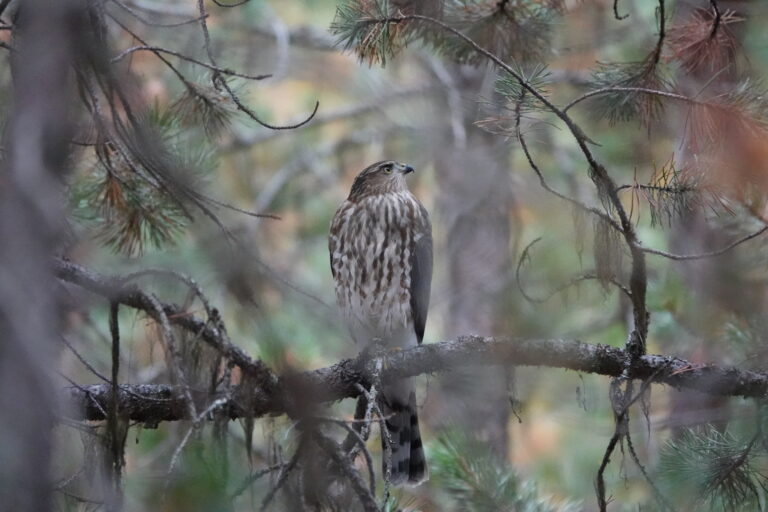
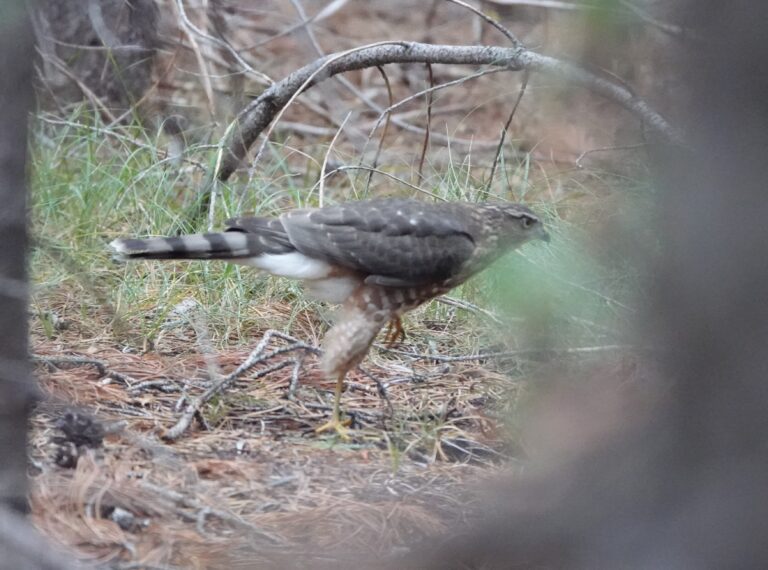
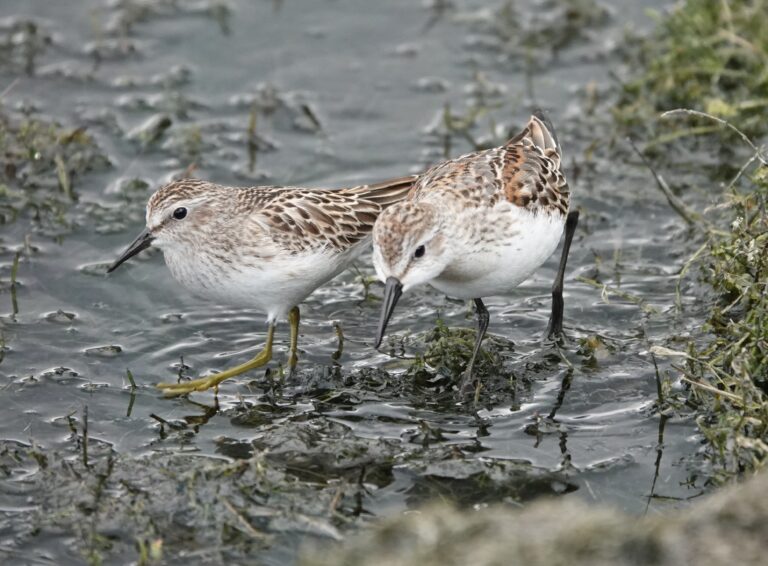
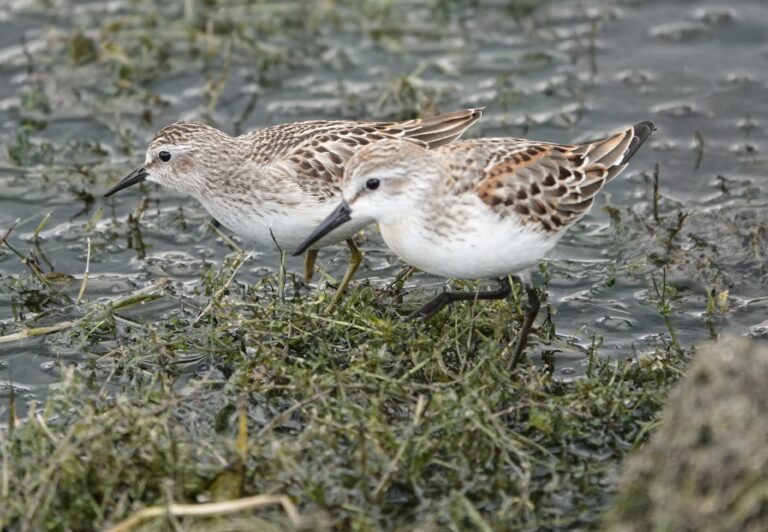
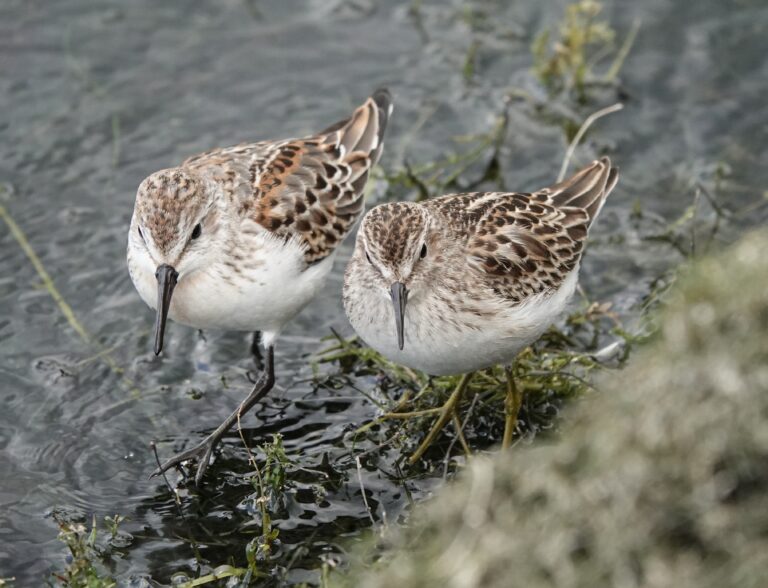

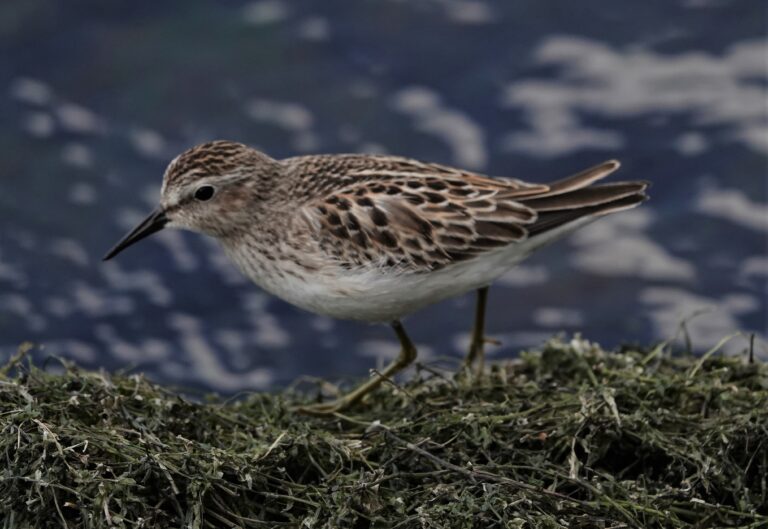
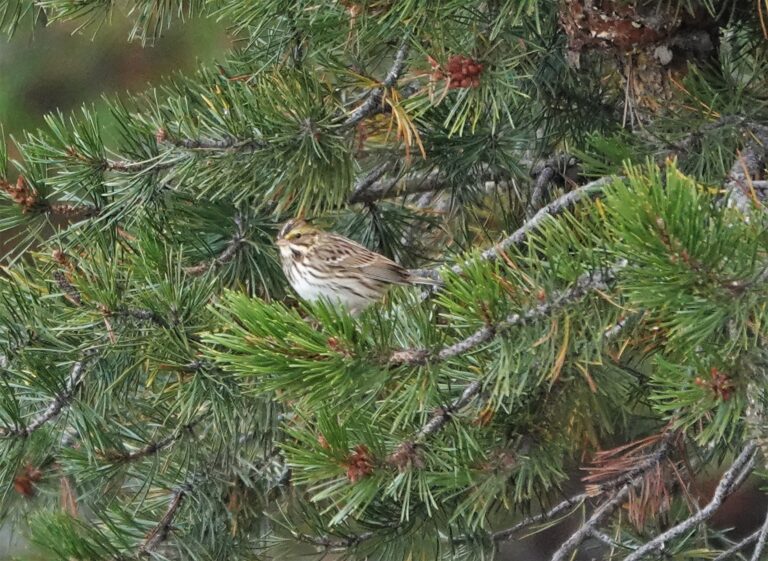
On the trip north to the lodge from south shore, the wind picked up a bit and the storm clouds gathered, ushering us home. It sprinkled a little bit while we were on the lake, but by the time we were in the lodge for some hot beverages it was raining and even produced a bit of hail. All in all a good day on a beautiful lake in the beautiful Oregon Cascades.
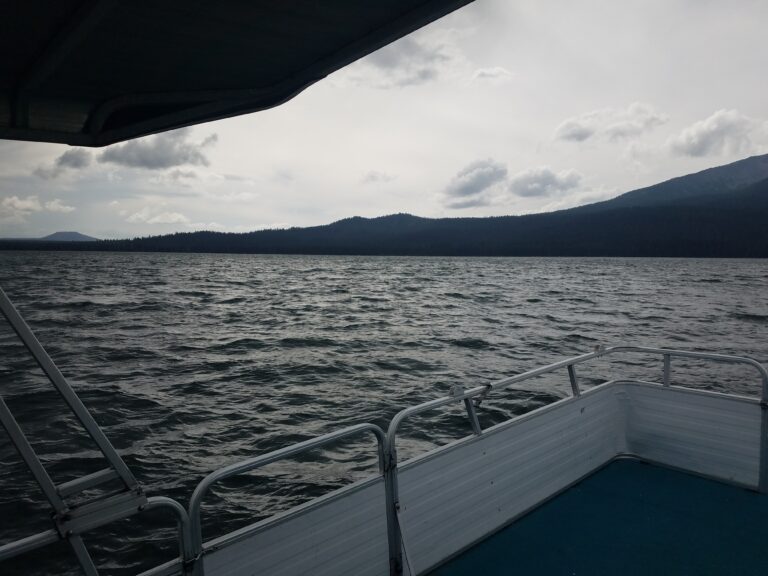
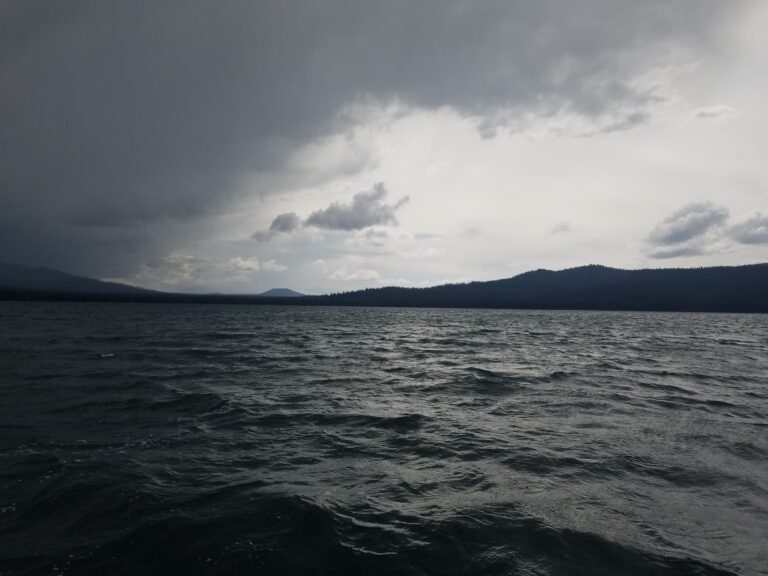
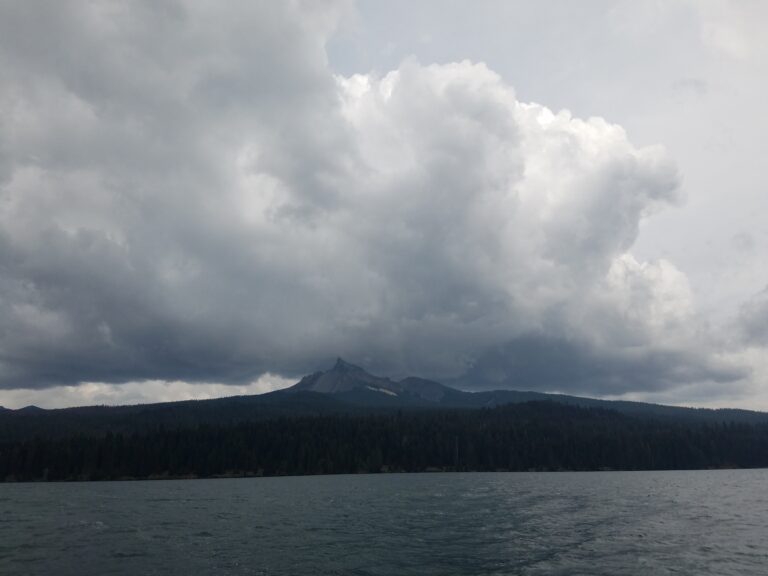
Since this was an exploratory trip, I would like to do a quick evaluation. Compared to late October trips, this trip …
*Had fewer waterbirds overall, besides Eared Grebe, American Coot, and Barrow’s Goldeneye, whose numbers were still large.
*Had no cormorants, no scaup, no scoters, no loons.
*Had no breeding-plumaged male waterfowl: goldeneye, diving ducks (exception of one male Ring-necked Duck), or puddle ducks of any kind.
*Had no snow on the mountains.
*Had Red-necked Phalaropes not found on October trips.
*Had more landbirds
*Was warmer 🙂
Will I do a mid-September trip again? Maybe. Bird numbers were probably too low to keep the attention of beginning birders, but September can be a highly variable month. So, we’ll see. Perhaps I’ll try a bit later in September or in early October as well.
My complete checklist of 55 species of birds for this trip, with photos of 31 species, is here: https://ebird.org/checklist/S118988060
Photos from a couple previous trips are here:
Hope to see you in October or next year! 🙂
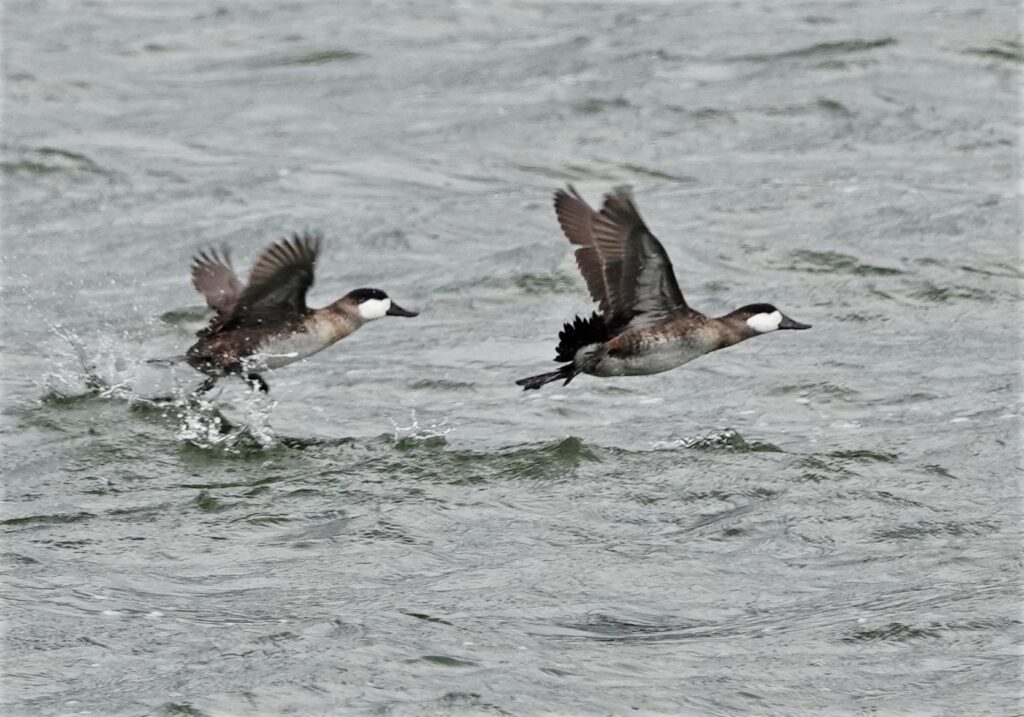
This Post Has 5 Comments
What an impressive group of birds!
I so much appreciate your thoughtfulness to prepare and share all of this with us!
Beautifully done and totally engaging trip report.
Can’t wait till October!
Great post, Matt. I almost felt like I went with you.
I Am so sorry I wasn’t the only one that had to cancel. I was looking forward to the Oct trip but after reading this I am “excited” about the Oct trip!! Thank you for sharing this. I know to dress very warm for the trip if it was Sept and 32*, 🙂
Thanks for sharing. I wish I could have joined you.